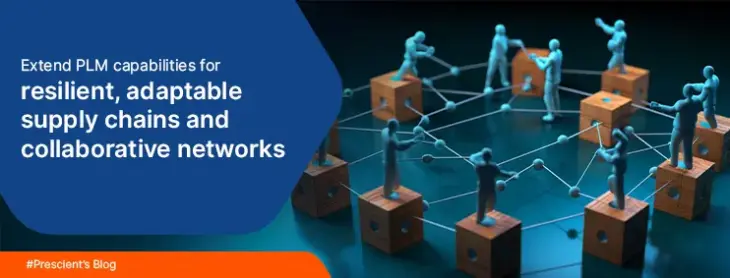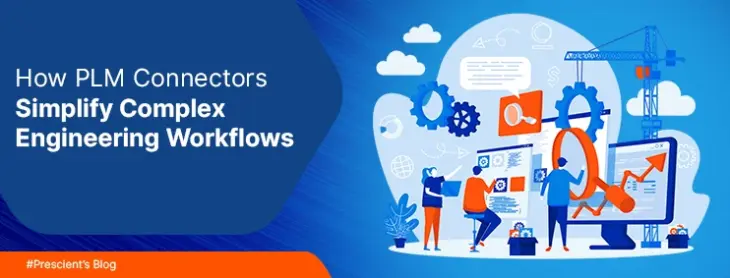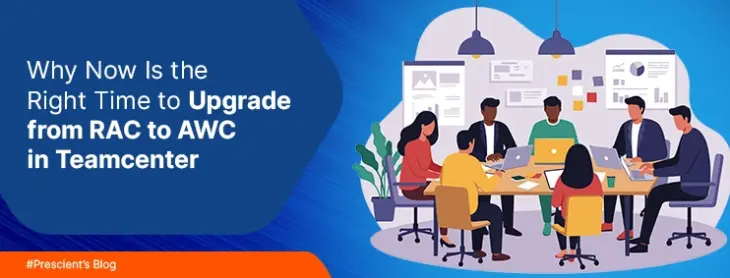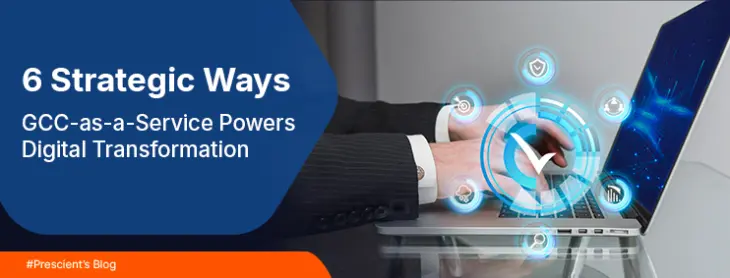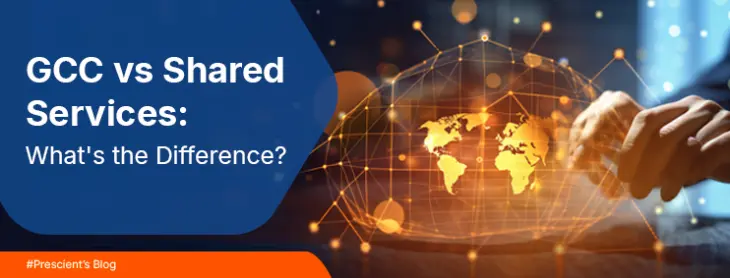Configurable vs Customized PLM: How to Avoid Future Upgrade Lock-in
Your PLM system should evolve with your business not trap it in place. Yet countless manufacturers discover this truth too late, when a seemingly simple software upgrade becomes a six-month ordeal requiring extensive code rewrites and threatening business continuity. The difference between configurable and customized PLM isn’t just technical semantics. It’s the difference between a system that grows with you and one that eventually holds you hostage. The Upgrade Lock-in Problem: A Growing Crisis Every year, PLM vendors release new versions packed with enhanced capabilities, security patches, and modern integrations. Your competitors adopt these improvements quickly, gaining efficiency advantages. Meanwhile, your team receives the dreaded news: “Our customizations aren’t compatible with the new version. Upgrading will take 8-12 months and cost $500,000.” This scenario plays out across manufacturing with alarming frequency. Companies invest heavily in PLM systems, customize them extensively to meet specific requirements, and then discover they’ve created upgrade barriers that grow more expensive with each passing version. The financial impact compounds over time: Beyond dollars, upgrade lock-in creates operational paralysis. Teams hesitate to modify processes because changes might complicate future upgrades. Innovation stalls. Business agility suffers. The system that should enable growth becomes a constraint. Why Heavy Customization Creates Technical Debt Understanding why PLM customization leads to upgrade lock-in req uires examining how customizations interact with core system architecture. When vendors release new versions, they modify underlying code, databases, and APIs. Extensive customizations built on the old foundation often break catastrophically. Core modifications are the biggest culprit. When customizations alter fundamental PLM objects, workflows, or data models, they create fragile dependencies. A vendor’s structural change can cascade through dozens of custom modules, requiring complete rewrites. Custom code lacks vendor support. During upgrades, vendors test and validate their standard functionality. Your custom code? That’s entirely your responsibility to fix, test, and validate. This burden grows exponentially with customization complexity. Integration points multiply maintenance. Custom integrations with ERP, CAD, and other systems often rely on specific API versions. Vendor upgrades frequently deprecate old APIs, forcing integration rewrites alongside core customization updates. Documentation gaps compound problems. Custom code written years ago by departed developers becomes a black box. Without proper documentation, even simple customization updates consume weeks of reverse-engineering effort during PLM implementation upgrades. The irony? Most heavy customizations address requirements that configurable solutions could have handled with proper PLM implementation planning. Configurable PLM: Built-in Flexibility Without the Baggage Modern configurable PLM platforms deliver extensive flexibility through vendor-supported mechanisms designed to survive upgrades. Understanding these capabilities transforms how manufacturers approach PLM customization decisions. Configuration tools provide powerful adaptation: These configuration capabilities handle 80-90% of typical “customization” requirements. The critical difference? Configurations remain vendor-supported through upgrades. The vendor tests configuration compatibility, provides migration tools, and ensures configurations survive version transitions. The upgrade advantage is transformative: Strategic PLM implementation leverages configuration first, reserving true customization for genuinely unique requirements that configuration cannot address. The Smart Customization Strategy: When and How to Customize Eliminating all PLM customization isn’t realistic or advisable. Some requirements genuinely exceed configuration capabilities. The key is distinguishing necessary customization from premature customization and implementing it with upgrade survivability in mind. Reserve customization for these scenarios: When customization is necessary, follow upgrade-friendly principles: Build through extensibility frameworks. Modern PLM platforms provide custom development frameworks designed for upgrade compatibility. These frameworks offer hooks, events, and APIs that remain stable across versions, allowing customizations to survive upgrades with minimal modification. Maintain strict separation from core code. Never modify vendor-supplied objects, workflows, or data models directly. Build separate custom modules that interact with the core through supported interfaces. This isolation prevents vendor changes from breaking your customizations. Document obsessively with future developers in mind. Every customization needs comprehensive documentation explaining business requirements, technical implementation, dependencies, and testing procedures. Future upgrade teams will thank you. Version control everything. Maintain complete revision history of all custom code, configurations, and documentation. This enables rapid assessment of what changed between versions and expedites upgrade testing. Plan upgrade testing from day one. Design customizations with testability in mind. Maintain automated test suites covering all custom functionality. This dramatically reduces validation time during actual upgrades. Thoughtful PLM customization balances current needs with long-term flexibility, ensuring your investment supports rather than constrains future growth. Implementation Strategy: Getting It Right From the Start The most effective time to prevent upgrade lock-in is during initial PLM implementation. Decisions made during deployment establish patterns that persist for years. Following a configuration-first methodology protects long-term flexibility while meeting immediate requirements. Phase 1: Requirements Analysis with Configuration Mapping Before writing a single line of custom code, exhaustively explore configuration capabilities: Many “must-have customizations” evaporate when configuration capabilities are fully understood and business processes adapt modestly. Phase 2: Configuration-First Implementation Implement all configuration-addressable requirements first: This approach delivers immediate value while maintaining upgrade flexibility. Teams gain experience with configuration tools, often discovering additional standard solutions for perceived customization needs. Phase 3: Selective, Strategic Customization For requirements genuinely exceeding configuration capabilities, implement minimal, focused customizations: Phase 4: Ongoing Governance Establish rigorous change management processes: Strong governance prevents customization creep that gradually recreates upgrade lock-in despite initial discipline. Moving Forward: Breaking Free from Lock-in If you’re already locked into a heavily customized PLM system, the path forward requires honest assessment and strategic action. Continuing with the status quo only deepens the problem as technical debt compounds with each postponed upgrade. Assessment starts with inventory: Remediation follows multiple paths: Some organizations undertake phased “de-customization” projects, systematically replacing custom code with vendor-supported configurations. Others time major customization reduction with necessary upgrades, combining upgrade and modernization efforts. Still others implement parallel configurable systems, gradually migrating from legacy customized environments. The right approach depends on your specific situation, but action beats inaction. Every year maintaining heavily customized systems increases future migration costs while competitors advance with modern, flexible platforms. Take Control of Your PLM Future PLM customization and PLM implementation decisions made today determine your flexibility tomorrow. The difference between configurable and customized approaches isn’t just technical it’s strategic. Configurable systems adapt
Read MoreReducing ECO Load Through CAD Automation: A Practical Implementation Guide
Picture this: It’s 3 PM on a Friday, and your engineering team just discovered a critical dimensional error in a component that’s already been released to production. What follows is a familiar cascade emergency meetings, rushed paperwork, production line adjustments, and an engineering change order that will consume countless hours and thousands of dollars. Sound familiar? You’re not alone. The Hidden Cost of Engineering Change Orders Engineering change orders represent one of the most significant yet underestimated drains on manufacturing efficiency. Industry data suggests that ECOs cost manufacturers between $5,000 to $50,000 per change, depending on complexity and timing. But the real impact goes far beyond the immediate financial hit. Every ECO triggers a domino effect: Through strategic CAD software development, these workflows can be dramatically improved. Late-stage ECOs are particularly painful. Consider the cost escalation: Post-production changes can derail entire product launches and damage customer relationships permanently. Why Traditional Processes Amplify the Problem The root cause isn’t careless engineering it’s process limitations. Most manufacturers rely on manual design validation, where human reviewers check CAD models against specifications, standards, and compatibility requirements. This approach has three critical weaknesses: Human error is inevitable. Even experienced engineers miss issues when reviewing complex assemblies with hundreds of components and thousands of dimensional relationships. Common failure points include: Validation happens too late. Traditional workflows perform comprehensive checks only at formal review gates. By then, the design has progressed significantly, making changes exponentially more expensive and time-consuming. Implementing design automation addresses this fundamental timing issue. Knowledge silos create blind spots. Manufacturing constraints, supplier capabilities, and historical issue patterns often live in individual team members’ heads rather than in systematic validation rules. When that expertise isn’t available during design, problems slip through. The result? ECO rates of 15-25% on new product introductions are common across the industry, with each change adding weeks to development timelines and straining resources that could be driving innovation instead. The Automation Advantage: Shifting Left on Quality Automated validation fundamentally changes this equation by embedding intelligence directly into the design environment. Rather than catching errors during reviews, automated systems prevent them from being created in the first place. Modern automation solutions validate designs continuously in real-time. As engineers model components, automated rules check: It’s like having an expert manufacturing engineer reviewing every design decision the moment it’s made. This “shift left” approach catching issues earlier in the development cycle delivers dramatic ECO reduction. Organizations implementing comprehensive automation report impressive results: Building Your Implementation Roadmap Successfully deploying automated validation requires strategic planning, not just technology installation. Effective CAD software development creates systems that integrate seamlessly with existing workflows. Here’s a practical framework for manufacturers ready to reduce ECO costs: Phase 1: Identify Your Pain Points Start by analysing your ECO data from the past 12-24 months. What patterns emerge? Common culprits include tolerance stack-up issues, standard part violations, manufacturability oversights, and supplier compatibility problems. Understanding your specific failure modes allows you to prioritise automated validation rules that deliver immediate value. Phase 2: Codify Tribal Knowledge Your experienced engineers carry invaluable design intelligence. Capture this expertise through structured interviews and workflow analysis. Which design decisions consistently cause problems? What manufacturing constraints must designs accommodate? What supplier limitations need consideration? This knowledge becomes the foundation for your automated validation rules. Phase 3: Implement Progressively Avoid the “big bang” approach. Start with automated checks for your highest-impact ECO categories, perhaps dimensional validation or standard part compliance. Let your team adapt to real-time validation feedback before expanding to additional rule sets. This staged approach builds confidence and allows you to refine your strategy based on real-world performance. Design automation implementation should always be incremental and measured. Phase 4: Integrate Across the Ecosystem Effective automation extends beyond the CAD environment. Connect your automated validation to product lifecycle management systems, ERP platforms, and supplier databases. When your validation system can verify real-time material availability, check against current supplier capabilities, and validate against manufacturing equipment specifications, you eliminate entire categories of potential ECOs. The key is creating an integrated ecosystem where automation touches every aspect of product development from initial concept through manufacturing release. This holistic approach ensures consistency and catches issues that might slip through isolated validation checks. Phase 5: Measure and Optimize Track your ECO metrics religiously not just volume, but timing, root causes, and costs. Monitor how many issues your automation catches versus human review. Identify patterns in the problems that still slip through and expand your rule sets accordingly. The most successful implementations treat automation as a continuously improving system rather than a one-time deployment, demonstrating clear return on investment. Professional CAD software development ensures scalability as your needs evolve. Real-World Impact: Beyond ECO Reduction When you significantly reduce engineering change orders through automated validation, the benefits extend far beyond avoiding change order costs: Operational Benefits: Strategic Advantages: Perhaps most importantly, engineering workflow optimization through automation creates a cultural shift. When engineers receive immediate feedback on design decisions rather than learning about problems weeks later in formal reviews, they develop stronger intuition about manufacturability and design excellence. The automation investment becomes a teaching tool that elevates your team’s capabilities over time. Strategic Considerations for Implementation Implementing effective automated validation requires more than off-the-shelf solutions. The most successful manufacturers invest in custom solutions that address their specific challenges, industry requirements, and manufacturing capabilities. Sophisticated design automation platforms must align with your unique operational context. Consider your unique design environment. Do you work with complex assemblies requiring interference checking? Do industry standards demand specific validation protocols? Does your supply chain have particular constraints that designs must accommodate? These factors should shape your implementation strategy. Integration capabilities matter tremendously. Your automation platform needs to communicate seamlessly with existing PLM systems, CAD tools, ERP platforms, and manufacturing execution systems. Custom development ensures these integrations work reliably rather than forcing workarounds with incompatible systems. Scalability is equally critical. As your product portfolio grows and design complexity increases, your automation infrastructure must scale accordingly. Investing in robust CAD software development from
Read MoreExtend PLM capabilities for resilient, adaptable supply chains and collaborative networks
Have you ever had to halt production because a critical supplier failed to deliver on time? Many manufacturers struggle with broken links in the supply chain, especially when their digital tools can’t adapt fast enough. In today’s uncertain environment, it’s no longer enough to have a Product Lifecycle Management (PLM) system that just tracks internal workflows. You need one that connects, adapts, and responds across your entire supply network. This is where PLM customization helps. It extends the core capabilities of your PLM system to create resilient, adaptable supply chains and collaborative ecosystems across suppliers, design teams, and manufacturing partners. Why Standard PLM Isn’t Enough for Modern Supply Chains Traditional PLM systems are mostly built to serve internal engineering teams. They focus on managing product data, revisions, and approvals. But supply chains today involve global partners, suppliers, and external contributors. Static systems can’t handle this complexity. PLM needs to evolve from being a data repository to becoming a connected collaboration backbone. That transformation begins with customisation. How PLM Customization Supports Supply Chain Resilience 1. Design for Disruption Disruptions be it a pandemic, conflict, or material shortage can break traditional supply chains. Companies with custom PLM workflows can build alternative sourcing models and simulate supply risks before they cause damage. A customised PLM system can: According to Wired (2023), 75% of manufacturers plan to invest in digital resilience tools after recent global supply chain shocks. 2. Real-Time Supplier Collaboration Your suppliers shouldn’t be left out of your product lifecycle. A customised PLM platform can offer secure access to selected data, letting vendors contribute at earlier stages of design and manufacturing. Key features include: With PLM supplier collaboration, you reduce cycle time and improve component quality before a part reaches production. 3. Faster Workflows with Automation Manual approvals and data updates often cause delays. PLM workflow automation streamlines repetitive tasks by automatically routing files, notifying users, and logging changes. Common use cases include: This level of automation brings greater control and reduces human error. TechVersions reports that PLM automation can cut product development time by up to 35% (2024). Connecting the Digital Thread Beyond the Organisation The digital thread is the flow of data that connects every stage of your product lifecycle. PLM is a core part of this, but without customization, the thread often breaks when external partners come into play. PLM customization helps by: By building an extended thread, you ensure that everyone internal or external is working from the same up-to-date product data. Why Adaptability Needs to Be Built Into PLM Resilience is not just about reacting to crises it’s about adapting quickly. An adaptable PLM system allows you to: This flexibility makes it easier to meet customer demands, enter new markets, and respond to emerging challenges without rebuilding your system from scratch. Signs You Should Extend Your PLM Capabilities You might need PLM customization if: These issues become business risks as supply chains get more complex. A generic PLM setup cannot handle such variability. A customised one can. What Prescient Technologies Offers Prescient Technologies helps manufacturers build smarter PLM environments that go beyond engineering silos. We specialise in: Our team has delivered custom PLM solutions for leading global manufacturers across industries, making their product and supply data more connected, secure, and adaptable. Key Takeaways Ready to Extend Your PLM Capabilities? If your organisation is looking to improve product visibility, strengthen supplier networks, and build more adaptable operations, it’s time to extend your PLM system. 👉 Talk to Prescient Technologies about how PLM customization can make your supply chain more resilient, collaborative, and future-ready.Contact us to get started.
Read MoreHow Sustainability Is Shaping CAD Software Development for Material Optimization, Energy Use, and Waste Reduction
Can Your CAD Tools Keep Up with Climate Demands? Manufacturers around the world are under pressure to reduce carbon emissions, minimise waste, and develop energy-efficient products. But there’s one question every engineering team should ask is your CAD software helping or holding you back from meeting your sustainability goals? As product lifecycles grow more complex and regulations tighten, traditional design workflows no longer suffice. Today, CAD software development plays a critical role in embedding sustainability from the earliest stages of design. It’s not just about creating shapes it’s about making smarter, lighter, and more responsible products. Let’s explore how CAD tools are being transformed to support material optimisation, reduce energy consumption, and minimise waste across the product development cycle. Traditional CAD Workflows Don’t Prioritise Environmental Impact For years, CAD software development focused on improving design accuracy and accelerating time-to-market. But sustainability was rarely a core concern. That’s changing. Here are key challenges with older CAD systems: According to a 2024 study by Lucent Innovation, nearly 45% of manufacturers now say their design tools must directly support energy efficiency and material reduction. Yet many still rely on outdated CAD kernels that are not optimised for environmental metrics. The Hidden Cost of Design Choices When sustainability is left out of early design, manufacturers face: A poorly optimised CAD model may look perfect on screen but lead to real-world waste. Every gram of material saved in a digital model could translate to tons of raw resource savings in mass production. Every kilowatt avoided during machining reduces your carbon footprint. So why not let CAD software development do the heavy lifting? Sustainable CAD Software Development Modern CAD platforms are evolving. They now come with tools that support sustainable engineering practices from the geometry core to energy-aware design features. 🔹 1. Material-Saving Design in CAD Prescient Technologies integrates geometric modeling and CAD kernels that prioritise structural strength with minimal material usage. This is not just efficient it’s sustainable. 🔹 2. Energy-Efficient CAD Modeling According to Wired, design-led manufacturing improvements can reduce energy use by up to 25% per product. 🔹 3. Waste Reduction with Smart Assemblies Through CAD automation, teams can build models that are easy to update and maintain, reducing digital and physical waste. Key Enablers Driving Sustainability in CAD Cloud-Based CAD Platforms They enable real-time collaboration and reduce hardware energy loads. AI in CAD Software Development AI recommends eco-friendly materials and flags unsustainable geometry. Integration with PLM and Simulation Tools Bridges the gap between product design and lifecycle management. Digital Twins Mirror physical assets for testing performance without building wasteful prototypes. Prescient’s experience in CAD software development and integration makes all of this possible in a single ecosystem tailored for manufacturing companies. What Makes Prescient Technologies Different? Prescient has delivered CAD tools and custom geometric modeling solutions for over two decades. The company blends deep domain expertise with CAD automation and AI-assisted optimisation to help clients reduce their design footprint. Key offerings include: These tools are built not just for performance but for the planet. Conclusion: Key Takeaways Looking to Build Sustainable Products from the Start? Contact Prescient Technologies to learn how our CAD Software Development services and automation tools can help your team reduce material use, energy costs, and waste right from the design stage. Let’s build smarter, greener products together. Explore our CAD offerings today – including geometric modeling, CAD kernels, and design automation.
Read MoreWhy Teamcenter Implementation Matters Today
In the rapidly evolving manufacturing and engineering environment, executing a proper Teamcenter implementation can mean the difference between fragmented data silos and seamless, collaborative workflows. As product complexity rises, companies must unify CAD, BOM, change management, and systems like ERP. A well-executed Teamcenter implementation becomes the backbone of innovation, enabling higher quality, faster time to market, and better control over the product lifecycle. This guide walks through the practical blueprint from greenfield planning to a stable go-live, with best practices and real-world insight for engineering leads, IT heads, and PLM champions. Setting the Stage: Planning Your Teamcenter Implementation Define Clear Objectives & Use Cases Begin by documenting the business challenges you intend to solve with Teamcenter. Do you want to: Clear objectives enable you to prioritize modules and keep implementation scope manageable. Secure Leadership Sponsorship & Governance Any PLM project risks stalling without visible executive support. Ensure your steering committee includes department heads from engineering, manufacturing, IT, and quality. Establish decision authorities, escalation paths, and success metrics. Conduct Current State Assessment & Gap Analysis Map existing tools, manual processes, spreadsheets, and data models. Capture how file sharing, CAD vaulting, BOM reconciliation, and change approvals currently operate. This “as-is” map allows you to spot gaps and target what to address in your Teamcenter implementation. Define Go-Live Scope (MVP Approach) Resist the temptation to deploy every feature at once. Define your MVP (minimum viable product) — e.g. CAD integration + revision control + change management for one product line. Defer optional modules (supplier portal, advanced analytics) for future releases. Architecture, Environment & Integration Planning Decide whether you will host on-premises, cloud, or hybrid. Plan server sizing, database architecture, network bandwidth, and disaster recovery.Also design integration touchpoints: CAD systems (e.g. NX, Creo, SolidWorks), ERP, MES, and other enterprise systems. Map data flow, API or middleware layers, and designate where transformations or validations occur. Design & Configuration Phase: Building Your Core System Data Model & Naming Conventions Create a robust data model: item, revision, dataset, classification, attributes, and relationships. Define standardized attribute templates and naming rules. This becomes the foundation of consistency across your Teamcenter implementation. Workflow & Process Definition Design your change process: CR (Change Request) → CA (Change Action) → ECO (Engineering Change Order). Include approval loops, notifications, escalation rules, and integration with change history. Before automating, validate process logic with domain experts. Role-Based Access & UI Configuration Configure roles, privileges, and UI views. Each user group (design, manufacturing, QA, procurement) should see a tailored interface. This ensures usability and reduces load on average users. Integration & Customization Develop connectors, web services, or scripts for data exchange with ERP, CAD, or PLM-adjacent tools. Use configuration first; minimize heavy customizations. Too much customization increases maintenance burden and upgrade risk. Expertia+1 Data Migration & Cleansing Legacy data migration is often underestimated. Clean duplicates, correct attribute inconsistencies, remove obsolete records. Transform data to match your new model, then load it in test environments. Validate integrity. cmscomputer.in+1 Prototype & User Validation Run pilot examples or sample projects to validate design choices. Let key users test workflows early, capture feedback, and iterate before finalizing configuration. Security & Performance Checks Set up authentication, role validation, encryption, and audit trails. Conduct load & stress tests to simulate real user usage. If using cloud (e.g. Teamcenter X), leverage built-in security best practices. Siemens Blog Network Testing, Pilots & Training Phase Functional & Integration Testing Validate each module in isolation (change, BOM, document management). Then run full flows involving CAD to BOM to ERP sync. Confirm data consistency and transaction integrity. User Acceptance Testing (UAT) Select superusers or domain leads from each discipline to execute real scenarios. Collect defects, iterate, and revalidate. This gives confidence before full go-live. Pilot Go-Live Deploy to a controlled product line or department. Monitor usage, gather real feedback, and fix issues before scaling. This pilot acts as a final rehearsal for full rollout. Training & Documentation Provide role-based training — classroom, hands-on labs, quick reference guides. Create knowledge bases for users (FAQs, videos, how-to). Change management must be active: communicate benefits, collect feedback, reward adoption. Go-Live, Stabilization & Continuous Improvement Final Cutover & Production Launch Freeze legacy systems, perform delta data migration, and move to production. Ensure that backup and rollback plans are ready. Hypercare & Support Desk Maintain a dedicated support team post go-live. Track bugs, issues, user requests, and system performance. Provide quick resolution to maintain confidence. Performance Tuning & Monitoring Based on real usage, fine-tune caching, queries, indexing, background jobs, and database settings. Use dashboards to monitor system health and bottlenecks. Drive User Adoption & Change Culture Post-go-live, ensure adoption by measuring user logins, completed tasks, feedback surveys, and missed processes. Reward power users, identify champions, keep training active. Roadmap for Next Releases Set vision for upcoming modules: supplier portal, analytics, mobile access, PLM extensions. Prioritize enhancements based on user feedback and ROI. Key Challenges & How to Mitigate Them Why Prescient Technologies Is the Right Partner for Your Teamcenter Implementation Talk to our experts at Prescient Technologies to plan your next Teamcenter implementation with confidence.
Read MorePLM Customization Guide: BMIDE, Handlers, and UI Extensions (With Teamcenter Examples)
You already use a PLM system perhaps Teamcenter but your out-of-box setup feels rigid. Your business processes evolve, and demands for domain-specific logic, custom validation, or tailored user interfaces grow louder. You ask: How do I implement custom behaviors in PLM without breaking upgrades? That’s where PLM customization becomes essential. It helps you adapt your system (e.g. Teamcenter) with new data models, business rules, and UI components without rewriting base code. In this guide, you’ll walk through three core levers of PLM customization: BMIDE, Handlers / Extensions, and UI Extensions, all illustrated via Teamcenter examples. By the end, you’ll understand how to structure safe, upgrade-friendly customizations and choose the right approach per use case. 1. BMIDE (Business Modeler IDE) – The Foundation of Data Model Customization BMIDE is Siemens’ tool for defining or extending the data schema in Teamcenter. You use BMIDE to create new business objects, properties, list-of-values (LOVs), rules, and relationships that map to your organization’s domain. Example: Suppose you need a custom status field in your “Product Revision” object with domain-specific validation. You’d use BMIDE to add the property, attach a rule (e.g. valid transitions), and optionally write a custom handler or rule extension to enforce it. Tips & best practices: 2. Handlers & Extensions – Injecting Custom Logic A powerful dimension of PLM customization is event-driven logic triggering code when certain operations occur (create, revise, delete, check-in, etc.). In Teamcenter, these are often realized via handlers or rule extensions. int L4_register_handlers(METHOD_message_t *msg, va_list args) { EPM_register_rule_handler(“My_RuleHandler”, “MyRule”, (EPM_rule_handler_t)MyRuleHandler); EPM_register_action_handler(“My_ActionHandler”, “MyAction”, (EPM_action_handler_t)MyActionHandler); return 0;} Example: You want a custom check when a “Change Order” is being released. You attach a “Pre-action” extension on the “Release Change Order” operation. Your handler code verifies compliance with special business logic and aborts if not satisfied. UI / RAC Handlers: For client side (Rich Client / RAC) extensions, the “handlers” extension point can be used. You define control commands, then handler classes that execute on user interaction (e.g. menu clicks) in the client UI. Key considerations: 3. UI Extensions – Customizing the User Experience Because end users care about usability, you often need to adapt UI: forms, panels, dashboards, menus, etc. In Teamcenter, UI customization can happen in: Example: Suppose you need a custom tab in the “Item Revision” form that shows supplier metrics (pulled via an external service). In Active Workspace UI extension, you embed a custom widget that fetches supplier data via SOA or REST and displays it inline. Best practices: When you layer PLM customization, follow this structure: This separation helps maintain modularity, eases troubleshooting, and ensures upgrade tolerance. Many teams adopt a feature-based packaging model: each customization (e.g. “SupplierMetrics”) has its BMIDE template, handlers, UI parts, and integration code in a single package. Also, always keep future upgrades in mind. Avoid modifications to OOTB artifacts. Use hooks, extension points, and template layering. You’ve now seen how the three pillars BMIDE, Handlers, and UI Extensions form the foundation of PLM customization. But why trust this approach? At Prescient Technologies, our PLM customization services are built around these principles. We partner with clients to scope, design, implement, and support robust customizations covering BMIDE modeling, handler logic, UI extension, and integration with CAD, ERP, or IoT systems.
Read MoreHow PLM Implementation Connectors Simplify Complex Engineering Workflows
Engineering Teams Are Drowning in System Silos Have you ever spent hours just finding the right version of a design file? You’re not alone. As products become more complex, engineering teams often juggle disconnected tools like CAD, ERP, MES, and PLM. Managing data across these platforms without a unified flow leads to version control issues, duplicated efforts, and delays. A McKinsey report highlights that engineers spend up to 40% of their time searching for project data instead of solving engineering problems. This is where intelligent PLM implementation connectors come in they don’t just link software. They streamline chaos into clarity. The Real Cost of Disconnected Engineering Systems When systems don’t talk to each other, it creates invisible bottlenecks that hurt your business. Here’s how: According to Lucent Innovation, manufacturing companies can lose 12–15% of productivity annually due to poor data integration across platforms. The frustration? These are smart people working in a broken system. Not because the tools are bad, but because they’re not connected in the right way. What Are PLM Connectors and Why Should You Care? A PLM connector is like a translator between your critical systems CAD, ERP, MES, CRM, and more. It makes sure every piece of product information flows seamlessly and accurately across your organisation. Think of it like this: This isn’t automation for the sake of it. It’s smart data management that reduces engineering errors, accelerates workflows, and keeps teams in sync. How PLM Connectors Simplify Complex Workflows 1. Bridge Between Design and Manufacturing Design changes often don’t reach manufacturing on time. With real-time engineering collaboration using connectors, manufacturing gets automatic updates from PLM systems preventing costly mistakes on the shop floor. 2. Accelerated Product Lifecycle Management Setup PLM connectors enable a faster and more dependable product lifecycle management setup by avoiding manual configurations between tools. This speeds up implementation and keeps product data consistent across departments. 3. Improved Cross-Team Collaboration Sales, service, quality, and engineering all view the same product records. No more emailing spreadsheets or misaligned file versions. Everyone works with the most up-to-date information. 4. Supports Cloud-Based Scalability Many companies are moving toward cloud-based PLM integration. Connectors simplify this shift by ensuring legacy systems and modern cloud tools still communicate effectively. 5. Paves the Way for AI in Engineering AI applications in manufacturing like predictive design and anomaly detection rely on clean, connected data. AI in PLM for manufacturing only works when connectors break the silos and enable smart algorithms to see the full picture. When Should You Use a PLM Connector? You should consider it if: Prescient Technologies recommends PLM connectors during the early stages of implementation. This makes multi-system PLM integration smoother, cheaper, and less prone to rework. Prescient Technologies’ PLM Connectors: What Makes Them Different? Prescient’s connectors are built with over two decades of CAD/PLM software expertise. Unlike generic integration tools, these are: The connectors seamlessly integrate with other Prescient products like factoryCONNECT, machineCONNECT, and powerCONNECT, allowing full digital factory visibility. “Digital engineering needs digital connections. Without them, you’re just automating chaos.” – Engineering Tech Council, 2024 TechNewsWorld Report Key Takeaways Prescient’s custom connectors are built for real-time engineering collaboration and enterprise scalability. Engineering teams waste time navigating disconnected systems. PLM connectors bridge gaps between CAD, ERP, MES, and more. They speed up PLM implementation, improve accuracy, and reduce manual rework. These tools enable cloud-based PLM integration and support future-ready AI use cases.
Read MoreWhy Now Is the Right Time to Upgrade from RAC to AWC in Teamcenter
Many companies still rely on RAC (Rich Client) in Teamcenter. It has served them well for years. However, the software is becoming outdated. It struggles to meet modern demands. Teams need better performance, more scalability, and easier integration. AWC (Active Workspace Client) offers a solution to these issues. It is the modern alternative to RAC. Upgrading now can position your business for success. This blog explains why upgrading from RAC to AWC is the right decision. We will also discuss how Teamcenter Data Migration can make the transition smoother. Before: The Challenges of Using RAC in Teamcenter Although RAC has been a reliable tool, it comes with significant drawbacks today. As businesses grow, so do their data and system needs. RAC was not designed for modern requirements. Let’s look at the key challenges that businesses face with RAC. 1. Limited Scalability and Performance RAC struggles with large datasets. As data grows, performance slows down. Teams working with big datasets often experience delays. These delays can lead to frustration and decreased productivity. RAC was not built to handle the increasing amount of data that businesses deal with today. AWC, on the other hand, is designed for better performance and scalability. It can grow with your business and adapt to changing needs. 2. Complex User Interface and Integration Issues RAC’s user interface is not easy for everyone to navigate. New users must undergo extensive training. This can be time-consuming and costly. The interface is also not very intuitive. Users often need assistance to understand basic functions. Teamcenter integration issues are common when trying to link RAC with modern business tools. Many companies find that integrating RAC with other systems, such as ERP or cloud tools, is difficult. AWC simplifies this process. It uses a more intuitive, modern interface that is easier for everyone to learn. 3. High Maintenance Overheads Maintaining RAC is not cheap. Companies spend time and money updating the system. They also need to deal with constant troubleshooting. IT teams are often bogged down by the need for updates, bug fixes, and security patches. This takes resources away from more strategic tasks. AWC, however, reduces these maintenance costs. The web-based system is easier to manage. Updates happen seamlessly, and IT teams don’t need to invest as much time in maintenance. After: Benefits of Upgrading to AWC Upgrading from RAC to AWC brings numerous benefits. The transition is smooth with Teamcenter Data Migration, and businesses quickly see improvements in their systems. Here are the key advantages of AWC over RAC. 1. Improved User Experience AWC offers a much more modern user experience. It uses a web-based interface, which is easy to access from anywhere. Users can log in from their office, home, or even on the go. This flexibility makes it easier for teams to collaborate and stay productive. AWC’s interface is also simpler and more intuitive. Employees spend less time learning how to use it and more time on their work. This improves overall efficiency and reduces training costs. 2. Better Performance AWC handles large amounts of data much better than RAC. The performance of your Teamcenter system improves with AWC. It is built to manage bigger datasets and more complex workflows without slowing down. Teams can quickly retrieve and work with data, no matter how much it grows. This means faster decision-making and better overall productivity. 3. Seamless Integration AWC is much better at integrating with other systems. Whether it’s ERP, CRM, or cloud tools, AWC can connect with them easily. This is a huge advantage over RAC, which often faces challenges when integrating with modern software. When different systems work together seamlessly, teams spend less time transferring data manually. Workflow becomes smoother and more efficient. 4. Lower IT Overheads AWC reduces the need for IT intervention. Since it’s web-based, there’s no need for software installation on every user’s machine. This saves IT departments time and money. Updates are handled centrally, so IT teams don’t need to spend time pushing updates to every workstation. AWC’s easy maintenance and cloud integration reduce the burden on IT staff, freeing them up for more important tasks. Bridge: How to Achieve a Smooth Transition with Teamcenter Data Migration The idea of migrating from RAC to AWC may seem daunting. But the Teamcenter Data Migration process can make it easier. With the right plan, businesses can transition smoothly to AWC without disrupting day-to-day operations. 1. Data Validation One of the most important parts of the migration is PLM data validation. This ensures that no data is lost during the move from RAC to AWC. Migration experts will verify that all data is transferred correctly. Data validation helps guarantee that your new system works as expected. It also ensures that your business operations continue without interruptions. This step is important for maintaining data integrity. 2. Planning the Migration Process A successful migration starts with careful planning. The first step is to assess the current system. What data needs to be moved? What integrations must be set up? By identifying key integration points early, businesses can avoid issues down the line. A detailed plan will also help minimize downtime during the transition. Professional migration services can assist with this. They will ensure a smooth transition by managing each step of the migration process. 3. User Training Although AWC is easier to use than RAC, training is still necessary. Employees will need to familiarize themselves with the new system. Training sessions should be scheduled to help staff learn how to navigate AWC efficiently. Proper training make sure that employees are comfortable using the new system right away. It will help them make the most of AWC’s features and improve their productivity. 4. Leveraging Cloud-Based Solutions AWC works well in cloud environments. Many businesses are moving their PLM systems to the cloud for better flexibility and scalability. Cloud-based PLM solutions reduce the need for on-premise IT infrastructure. They also improve data accessibility. Teams can access data and applications from anywhere, anytime. AWC’s cloud compatibility allows businesses to
Read More6 Strategic Ways GCC-as-a-Service Powers Digital Transformation
GCCaaS represents the evolution of traditional Global Capability Centers – from cost-saving offshore divisions to strategic partnership hubs providing a flexible, subscription-based model. As 75-80% of new GCCs now focus on adopting and implanting technologies like GenAI, ML, and edge computing, the as-a-Service model can open up access to these capabilities for both, mid-market and large enterprises alike. For businesses that aspire to remain lean, achieve accelerated growth, and respond to dynamic market conditions, GCCaaS is a robust solution. It allows companies to reallocate internal resources and focus 100% on core business objectives. The quantifiable outcomes include reduced time-to-market, substantial cost savings, fast talent acquisition, and desirable operational efficiency. Below we explore some key ways GCCaaS can deliver value to global enterprises. 1. Accelerating Digital Innovation and R&D Modern GCCs are evolving into “innovation accelerators” and “strategic Centers of Excellence” (CoEs). As such, GCCaaS model can provide a fast, lean, and purpose-built platform for innovation. Unlike the traditional GCC setup – demanding substantial capital outlay and only justifiable for well-defined, large-scale, cost-saving projects – the GCC as a Service model lowers the barrier to entry for strategic R&D. It delivers on-demand access to a network of domain specialists, technology experts, and delivery professionals. By transforming high-risk R&D investments into flexible, service-based models, a GCCaaS partner can enhance the entire innovation lifecycle. It allows global businesses to focus on creating and scaling disruptive products rather than managing the complexities of building a full-scale center themselves. 2. Enable Robust Cloud-First Digital Architecture A cloud-first approach is considered a necessary element for any modern enterprise, to enhance security, scalability, and agility of business processes. For most companies, adopting cloud platforms is quite challenging, with the need to push away legacy systems, address technical debt, and build a new, modern infrastructure. The GCCaaS model represents a powerful catalyst for business architecture transformation, by providing a pre-built, cloud-native foundation that clients can leverage. A GCC provider already using cloud-native, modular architecture will be the de-factor expert and migration partner for global enterprises. According to reports, cloud adoption had reached over 92% of global leaders as of 2024. Also, IDC stated that by the last quarter of 2024, the spending on cloud infrastructure had exceeded US$67 billion worldwide. The statistics demonstrate how cloud has become a mandatory step towards global competitiveness. In 2025 and beyond, a GCCaaS partner could help optimize costs while migrating to new architecture. 3. Explore and Adopt AI-Powered Process Automation The seamless application of AI and automation is a characteristic of modern GCCs, enabling them to transition from cost-saving centers to innovation-driven hubs. AI-driven automation is a continuous, closed-loop process where AI and ML capabilities are used to analyze data patterns and make proactive improvements, translating insights into automated actions. A GCC partner can leverage AI-powered solutions, such as automating tasks in finance, procurement, production, and HR. The emergence of hyperautomation, which combines AI, ML and Robotic Process Automation (RPA), has enabled better optimization of business processes. McKinsey, in a recent survey, found that by the end of 2024 nearly 78% enterprises were using AI in at least one process, up from 55% a year before. The GCCaaS model grants access to both AI tech as well as a specialized talent pool to the client, allowing them to adopt automation faster and realize quick ROI 4. Boost Customer Experience Via Digital Media Digital platforms today are reshaping customer expectations. Users demand a seamless, consistent, and personalized experience across all digital media. A GCCaaS provider is well-positioned to meet this need, by providing omnichannel platforms to integrate multiple channels into a single dashboard. This approach ensures that a customer’s journey is unified, irrespective of how they engage with a brand. Your GCC partner can deploy AI and automation to enhance this digital customer experience. Using AI-powered chatbots to provide 24/7 support and manage routine inquiries, a client could free human agents to handle more complex, high-value interactions. Predictive analytics also boosts the process capability, by analyzing customer data to anticipate demand and tackle potential issues before they arise. By centralizing consumer interaction data via a GCCaaS platform, an enterprise could gain a holistic, real-time view of the customer journey, ensuring a “single source of truth” for all interactions. The model assists in transforming customer support into a strategic differentiator, making the consumer feel understood and valued at every touchpoint. 5. Scalability of Data Analytics and Business Intelligence A notable challenge for many enterprises is the existence of data silos, inconsistency in business logic, and fragmented data sources, leading to inaccurate or misleading insights. These factors hinder the adoption of BI and other data-driven processes. The GCCaaS model brings a key architectural solution to this problem – centralization of data. Data consolidation allows companies to standardise processes, look for key patterns, and make agile, data-driven decisions consistent across the entire organization. A GCC provider, with expertise in data governance and centralized platforms, enforces the required norms and procedures to ensure data confidentiality, consistency, and quality at scale. Data analytics and BI scalability underpins the success of other digital transformation pillars. A dedicated GCCaaS provider addresses the critical link between raw data and tangible business value, to unlock the full potential of your digital transformation journey. 6. Establish and Maintain Resilient Digital Operations Modern global businesses must be built for resilience, not rigidity, due to the constant volatility and disruption across markets. Enterprises need to decentralize operations and distribute core capabilities across several territories, to diversify global footprint, mitigate risks and safeguard business continuity. The GCCaaS model is moving beyond its origin as a mechanism for cost reduction, to become the new standard for digital transformation. It has developed into a strategic, flexible, and scalable alternative to traditional outsourcing and in-house models, boasting a holistic framework for an organization’s digital journey. By addressing critical challenges in innovation, technology, data, customer experience, and operational resilience, GCCaaS will enable enterprises to achieve a complete and sustainable transformation. The surge of Agentic AI will play a central role,
Read MoreGCC vs Shared Services: What’s the Difference?
Consider the following scenario – A global manufacturing company faces a critical decision; establish a Global Capability Center (GCC) in India to accelerate their digital transformation journey, or opt for a Shared Services model and consolidate their back-office operations across North America and Europe. Both options promise substantial cost savings and increased operational efficiency, but which option will deliver sustainable competitive advantage? A GCC represents a dedicated, controlled, and talent pipeline needed to become a true strategic nerve center fostering innovation and supporting digital change. The ultimate objective with a GCC or a GCCaaS provider is not just cost savings, but a significant contribution toward the client’s competitive position. The decision between GCC and Shared Services becomes a direct reflection of a company’s long-term vision. GCC vs. Shared Services: A Comparative Analysis for Business Leaders The distinction between a GCC and a Shared Services approach is not one of scale but of strategic intent. Understanding these differences helps in making informed decisions about where and how to invest resources for long-term growth. Shared Services Model – Consolidated Service Delivery Cost Optimization and Enhanced Efficiency The primary benefits of Shared Services revolve around operational efficiency and cost reduction: GCC Or GCC as a Service – Strategic Growth and Value Creation The main objectives of GCCs go beyond just cost reduction. Innovation and R&D Focus Today, GCCs are driven by capability rather than cost. They are key business units to develop and adopt cloud platforms and AI, strengthen cybersecurity, and fuel product innovation. For engineering-powered enterprises, GCC providers deliver benefits such as Knowledge-based Engineering solutions, development of complex software, and advanced manufacturing automation systems. Decision Framework: Which Model Fits Your Business? Primary Intent and Strategic Business Goals Global Capability Centers (GCCs) are suited to enterprises seeking innovation, competitive market differentiation, with long-term capability building. They are ideal for high-value and complex processes, providing strategic access to specialized talent, and safeguarding intellectual property. In contrast, the Shared Services model is opted when the primary objective is cost reduction, operational efficiency, and immediate ROI. It can be beneficial for standardized and repeatable processes, consistent service delivery, and centralized oversight for business compliance. Resource Availability and Commitment GCCs require substantial upfront investment – substantially lower investment if partnering with a GCCaaS provider like Prescient Technologies – executive-level sponsorship, and a long-term commitment to innovation and capability development. However, they ensure business resilience and the ability to manage complex, distributed operations. Shared Services, on the other hand, need moderate initial investment, since they only focus on operational excellence, with clear opportunities for process standardization and defined service levels. Risk Mitigation and Longer Timeline A GCC strategy could be risky but promises greater long-term rewards, by tackling challenges in setup, talent acquisition, offshore compliance, and uncertain ROI on innovation strategies. Shared Services present a lower-risk profile, with proven deployment methods and delivering predictable ROI. But they can face difficulties related to process harmonization, resistance to change, and sustaining consistent service delivery. Decision Implications Selecting a GCC or Shared Services model will depend on organizational maturity, long-term ambition, and risk appetite. Enterprises who prioritize innovation, market differentiation, and resilient capability building must lean toward the GCC or GCCaaS models. If a company is focused only on efficiency, standardization, and predictable cost savings, it can opt for Shared Services. A clear understanding of business will help determine the most sustainable and impactful model. As organizations navigate digital transformation and global competitiveness, the importance of making informed decisions based on business priorities, resources, and tolerance for complexity becomes critical. Whether an enterprise chooses to establish a GCC partnership, implement shared services, or pursue a hybrid approach, success will depend on aligning choices with broader strategy and keeping focus on long-term value creation.
Read More

